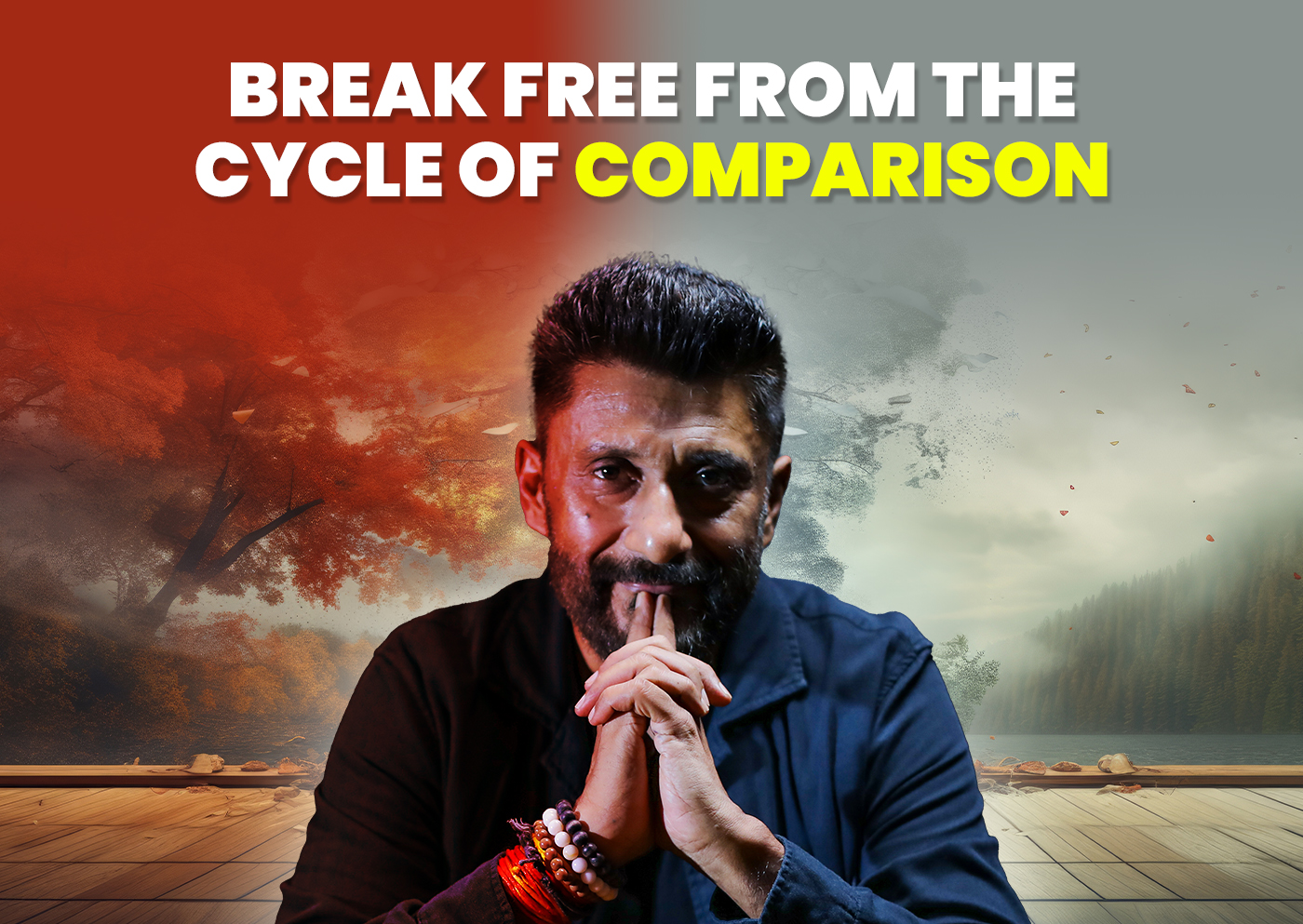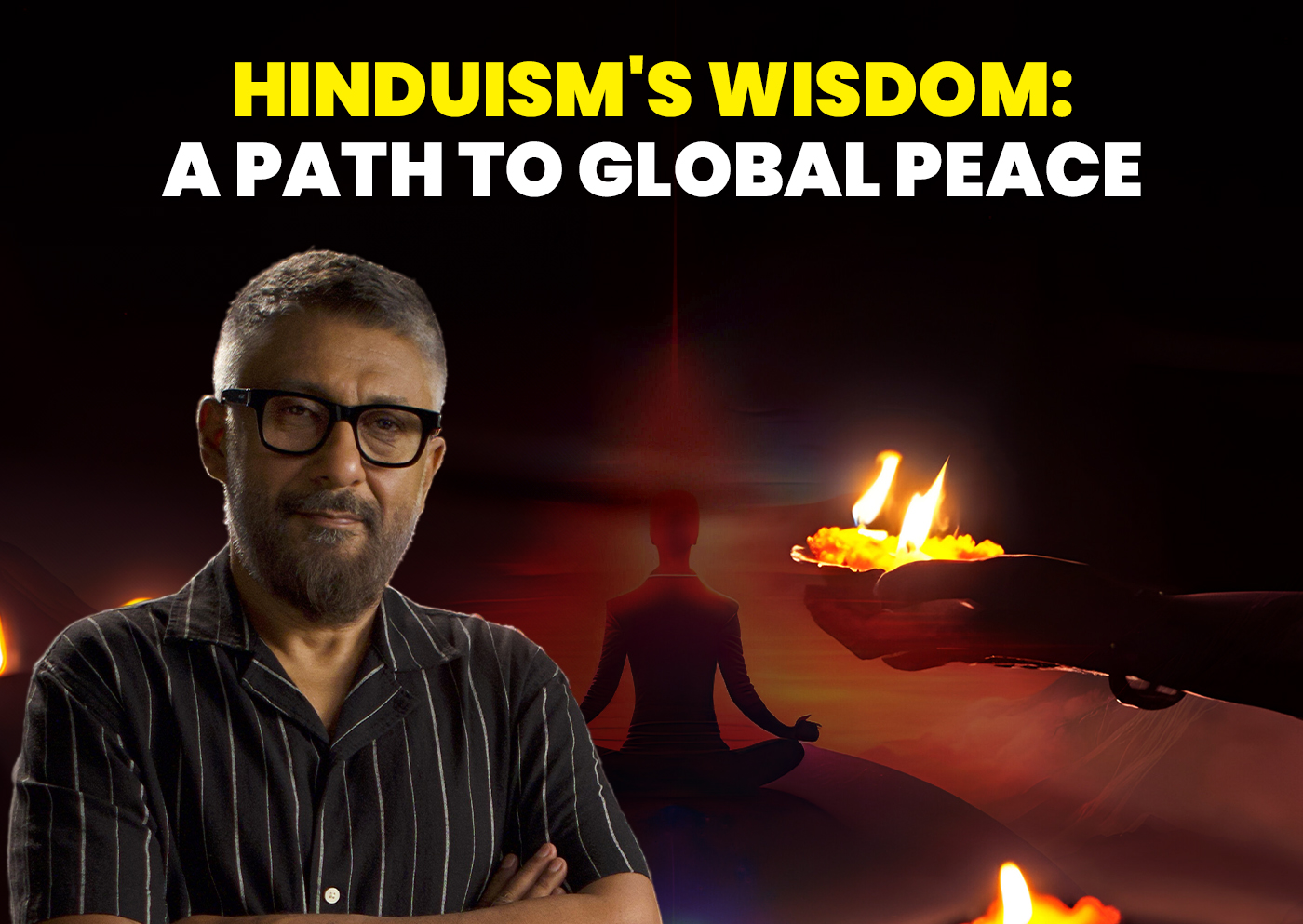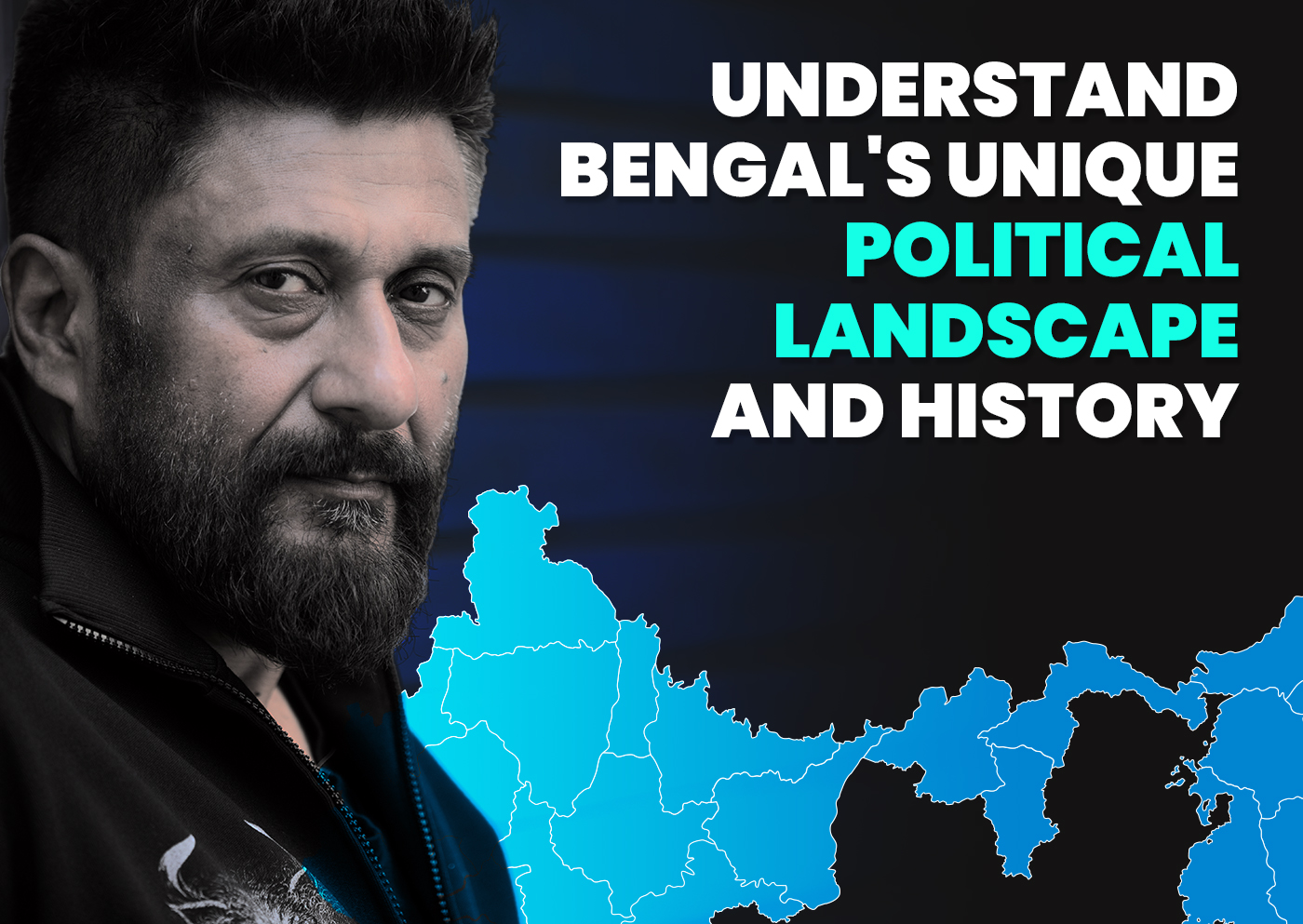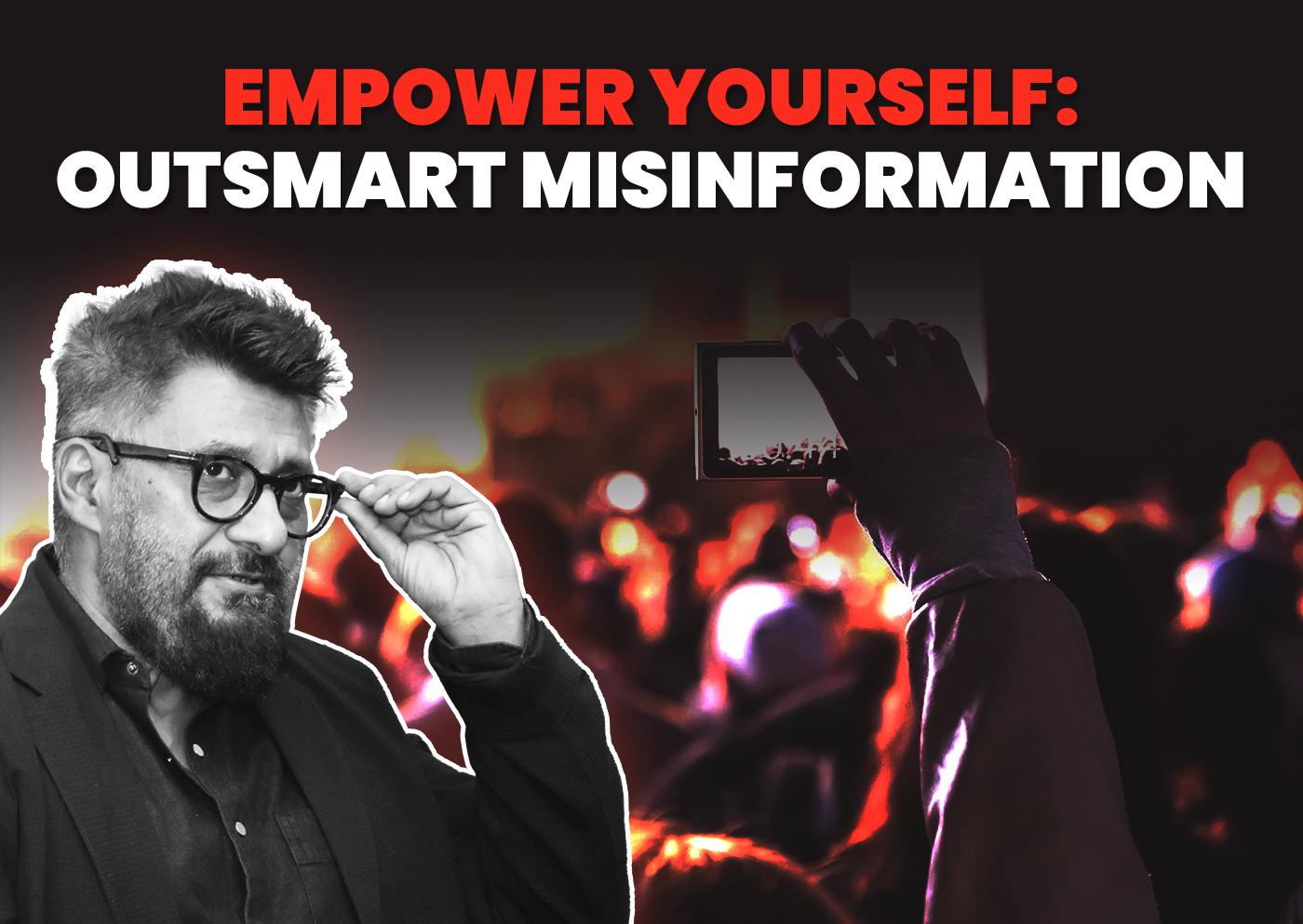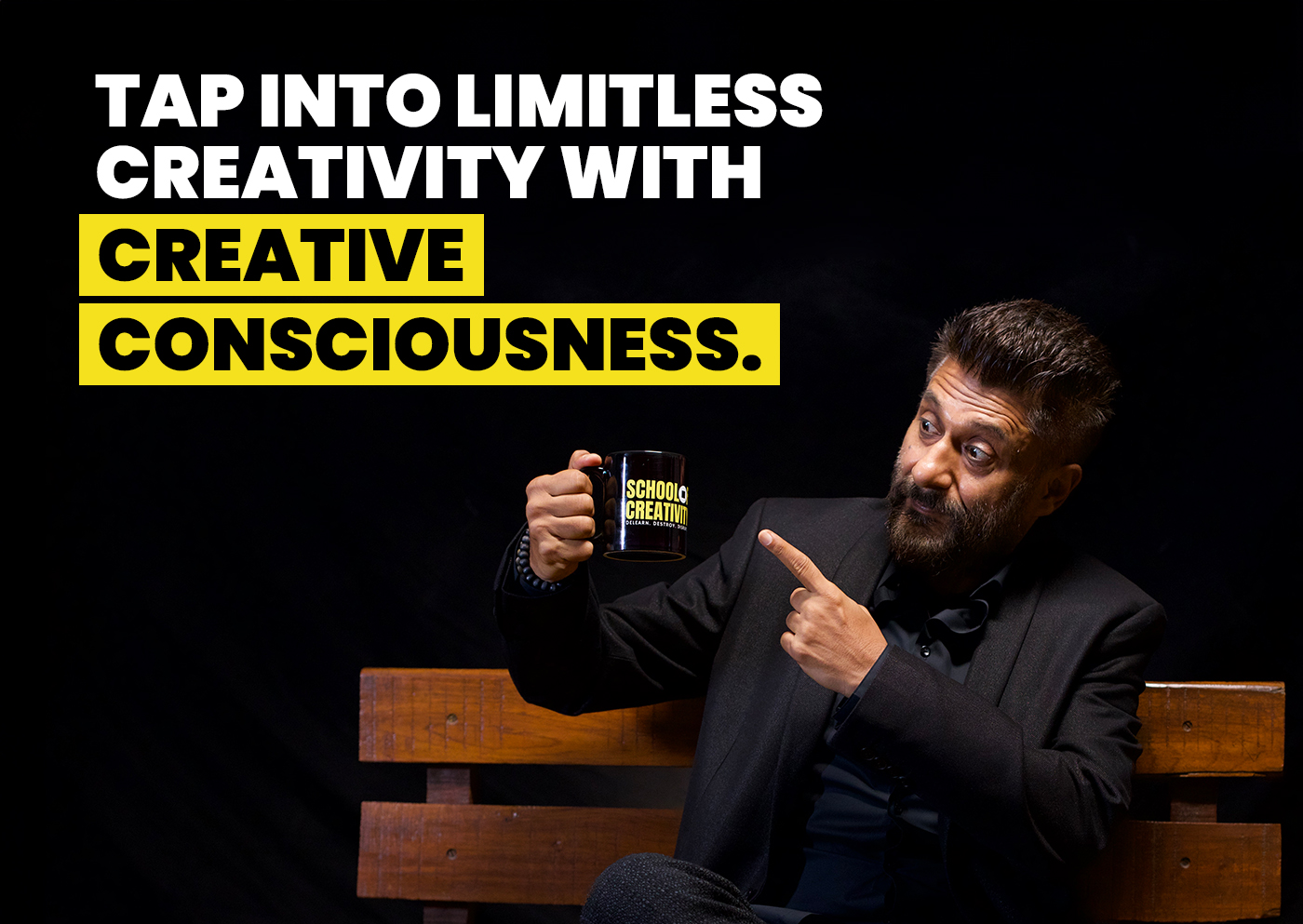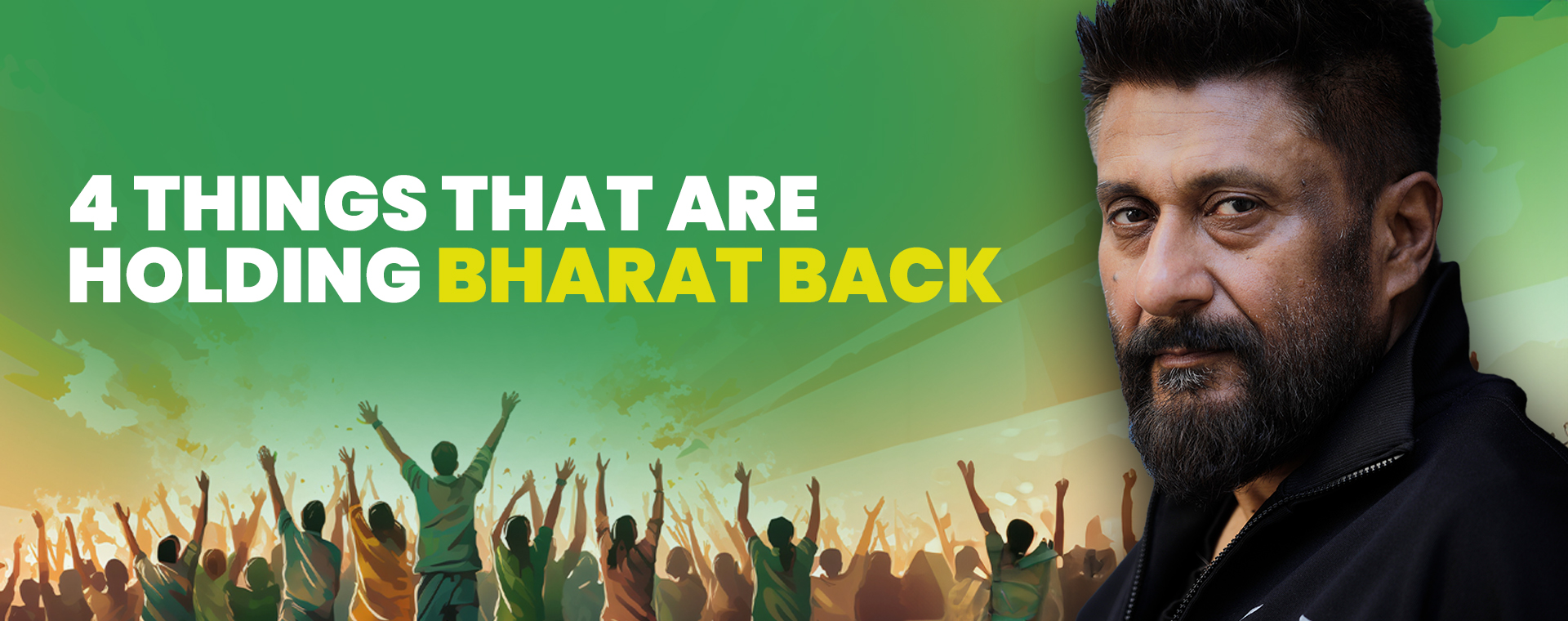

The Four Adversaries of Bharat: Lets Navigate Through Illusions Towards Enlightenment
Delve into Bharat’s contemporary challenges with Vivek Ranjan Agnihotri.
In the heart of Bharat, where the echoes of a glorious past meet the aspirations of a dynamic future, lies a battleground—a space where the minds and souls of the youth grapple with adversaries, not of flesh and bone but of ideals and aspirations. These forces, often invisible, shape the destiny of individuals and, by extension, the nation itself. Drawing from the profound insights of Vivek Ranjan Agnihotri, a luminary who has consistently championed the cause of awakening and empowerment, we delve deeper into understanding these adversaries and charting a path of resilience and enlightenment, specifically tailored for the youth of Bharat.
The Mirage of Foreign Shores
The allure of foreign lands has been a persistent narrative, enticing generations into believing that true success and fulfilment lie beyond the shores of Bharat. This dream, often painted with the brushstrokes of higher education and better livelihoods, overlooks the sacrifices woven into the very fabric of this pursuit. Parents toil, often beyond their means, to send their offspring to distant lands, harbouring hopes of prosperity and prestige. Yet, beneath this veneer of success lies a subtle erosion of identity and disconnection from one’s roots. Agnihotri prompts a critical reevaluation of this pursuit, urging the youth to discern the difference between genuine growth opportunities and the hollow promise of a life of servitude to foreign ideals, a call that is more urgent than ever.
The Call for Commitment and Strength
Echoing Swami Vivekananda’s timeless call, the need for a hundred committed young individuals to steer the nation towards progress has never been more acute. However, this adversary manifests in the dilution of strength and commitment among the youth, where the relentless waves of societal conformity and the undercurrents of political and religious narratives seek to erode the bedrock of independent thought. As Agnihotri suggests, the antidote lies in cultivating a mind fortified with critical thinking and an analytical approach capable of standing firm in the face of adversities and influences.
The Media Maze
In an age of omnipresent information, discerning truth from fabrication becomes a Herculean task. The media, a potent tool in shaping public opinion and narrative, emerges as a formidable adversary under the sway of vested interests. Agnihotri, while acknowledging the pivotal role of media in society, warns against the monopolisation of this space by entities more invested in manipulation than in disseminating the truth. The challenge for the youth and society at large is to navigate this maze with discernment, ensuring that the information consumed and shared serves to enlighten rather than ensnare. This is where the power of critical thinking comes into play, empowering the youth to make informed decisions and not be swayed by the media’s agenda.
The Cinematic Conundrum
Cinema, with its profound impact on culture and society, has the potential to be a vehicle for enlightenment and progress. However, the portrayal of Bharat and its ethos through a lens that prioritises glamour and escapism over authenticity and depth presents a distorted image to the world and the nation’s youth. The narrative of Bharat, rich in diversity and complexity, is often sidelined in favour of tales that resonate more with foreign sensibilities than with the indigenous spirit. Agnihotri urges a renaissance in Bharatiya cinema that embraces Bharat’s true narrative, showcasing its challenges, beauty, and aspirations, thereby inspiring the youth to engage with their culture and heritage meaningfully.
Charting the Path Forward
The journey towards overcoming these adversaries is not a solitary endeavour but a collective awakening to the power of self-reliance, critical thinking, and cultural pride. It requires a paradigm shift in defining success and valuing contributions to one’s nation and community above personal accolades on foreign soil. It necessitates an education system that imparts knowledge and fosters the ability to question, analyse, and innovate.
The role of media and cinema must evolve, championing narratives that reflect the truth of Bharat’s past, present, and future, unshackled from the chains of sensationalism and external approval. This evolution can pave the way for a new generation of storytellers, thinkers, and leaders who draw strength from their heritage and wield their knowledge and creativity as national and personal growth tools.
Conclusion: A Call to Renaissance
In addressing the four adversaries outlined by Vivek Ranjan Agnihotri, the call is not for rejection but for reformation—a reformation of aspirations, narratives, and the very essence of identity. It is a call to the youth of Bharat to stand tall, rooted in the richness of their culture, armed with the power of their intellect, and guided by the light of their creativity. Let this be the dawn of a renaissance, where every individual is not merely a passive participant in their destiny but an active architect of a future where Bharat reclaims its place as a beacon of wisdom, strength, and enlightenment on the global stage. In this journey, the sacrifices of parents and the dreams of generations find their fulfilment, not in the accolades gathered from distant lands but in the contributions made towards elevating Bharat and its people to new heights of glory and grace.

